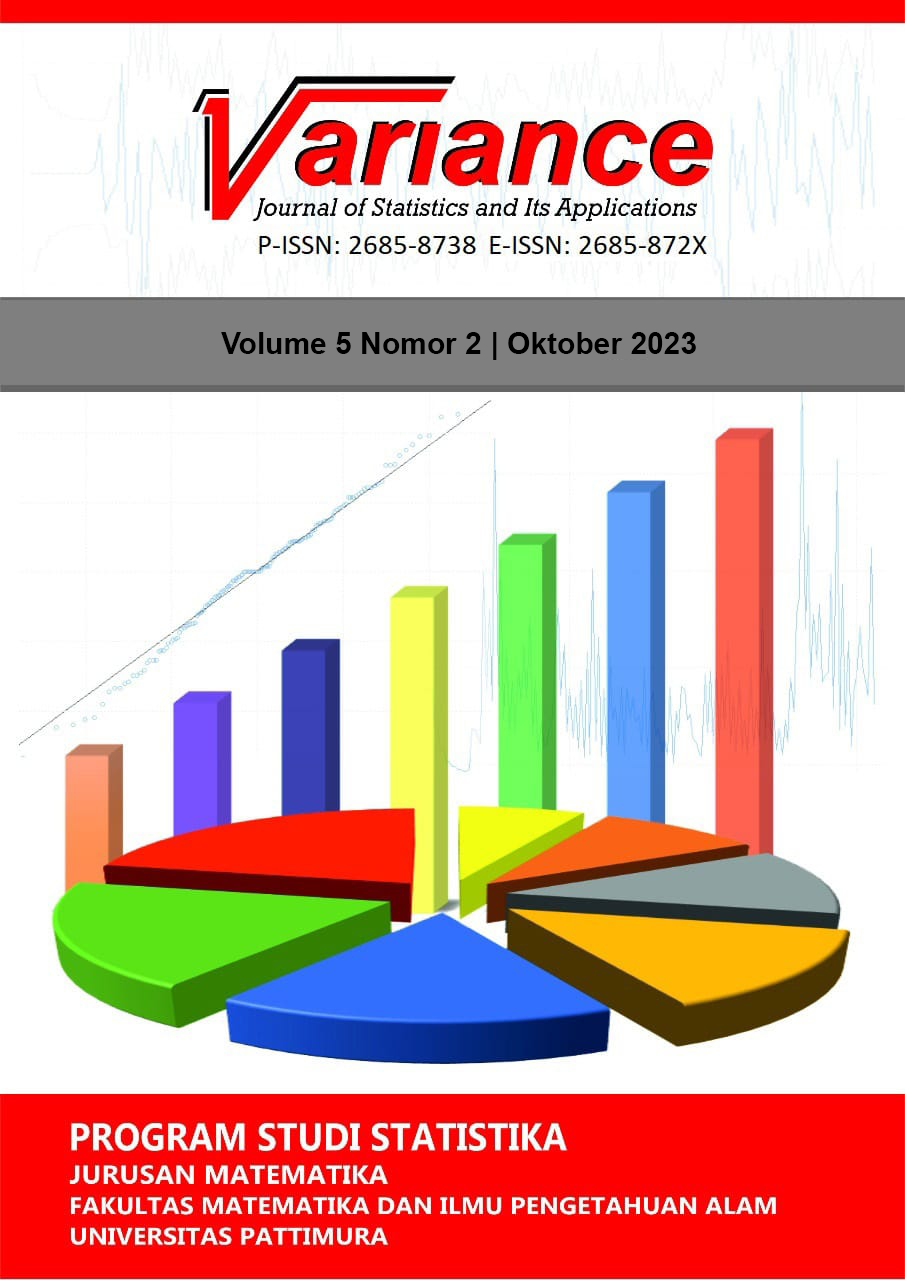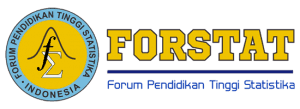CLASSIFICATION OF THE GEOCHEMICAL COMPOSITION OF METEORITE OF PUNGGUR (ASTOMULYO) BY k-NEAREST NEIGHBOR ALGORITHM
Abstract
The fall of a meteorite in Astomulyo Village, Punggur, Lampung Province in early 2021 is an interesting topic for further study. This rare object has been suggested to have a unique geochemical composition and a special connection with other meteorites. We aimed to trace its classification by comparing it with other well-known meteorites studied previously. We approach the classification process using the k-nearest neighbor algorithm. The database used 211 represents the geochemical data for each known meteorite group from chemical analyses of meteorites. As a result, we identified that with a k-value = 5 and the proportion of test data 5/95 (in %), the geochemical composition of this meteorite is relatively close to that of the H-type chondrite group with a value accuracy of 91.67%. These results are consistent with the fact that the meteorite of Punggur has a high total iron and metallic composition.
Downloads
References
D. G. Harbowo, R. Muztaba, H. L. Malasan, S. Sumardi, L. K. Agustina, T. Julian, J. H. Sitorus, A. D. A. Denhi, D. J. P. Sihombing, M. P. Mahayu and D. Setyawan, "Meteorite from Astomulyo Village, Central Lampung, Indonesia: Investigation of its chemical properties," in IOP Conference Series: Earth and Environmental Science, 2021.
D. G. Harbowo, J. H. Sitorus, L. K. Agustina, R. Muztaba, T. Julian and H. L. Malasan, "3D Modelling of Meteorite from Astomulyo Village, Lampung, Indonesia by Close Range Photogrammetry (CRP) Methods," in IOP Conference Series: Earth and Environmental Science, 2022.
F. Gurunescu, Data Mining: Concepts, Models and Techniques, Berlin: Springer, 2011.
S. Rahmadanti, Implementation of the K-nearest Neighbor Method in Determining Rock Mass Quality, Riau, 2020.
D. G. Harbowo, M. Afdareva, V. Inggrid and S. Sumardi, "Batusatam physical and chemical properties review: A Billitonite tektite in Southeastern Belitung Island, Indonesia," in IOP Conference Series: Earth and Environmental Science, 2021.
D. G. Harbowo, B. Priadi, T. Julian, R. N. Amelia, D. . J. P. Sihombing and F. S. Kencana, "A preliminary study on the element abundance in the Hulusimpang Formation, Way Kalianda, Pesawaran, Lampung, Indonesia," in IOP Conference Series: Earth and Environmental Science, 2021.
T. Muliawati, D. G. Harbowo, A. M. F. Lubis, J. D. Turnip, E. R. Irda, A. Azahra and Y. Marito, "k-Means Clustering to Enhance the Petrified Wood Composition Data Analyses and Its Interpretation," Indonesian Journal of Applied Mathematics, vol. 3, no. 1, pp. 26-33, 2023.
M. I. Sultoni, B. Hidayat and A. S. Subandrio, "Classification of igneous rock types through color imagery using local binary pattern and k-nearest neighbor methods," imagery using local binary pattern and k-nearest neighbor methods Telecommunications, Control, Computers, Electrical, and Electronics, vol. 4, no. 1, pp. 10-15, 2019.
S. N. Wibowo, B. Hidayat and J. Arif, "Identification of Igneous Rock Types Looking at Rock Texture Using the Discrete Wavelet Transform (dwt) and K-nearest Neighbor (knn) Methods," in eProceedings of Engineering, 2017.
F. C. Anggian, N. Hidayat and M. T. Furqon, "Technology Development and Computer Science," Journal of Information Technology Development and Computer Science Classification of Volcano Status, vol. 3, no. 12, pp. 11027-11033, 2020.
F. Tempola, M. Muhammad and A. Khairan, "Comparison of Classification Between KNN and Naive Bayes in Determining Volcano Status with K-Fold Cross Validation," Journal of Information Technology and Computer Science, vol. 5, no. 5, pp. 577-584, 2018.
H. J. Kuen, B. Hidayat, and J. Arif, "Identification of Human Age Range Through Molar Tooth Fossils Based on Digital Image Processing Using the Discrete Wavelet Transform and K-nearest Neighbor (k-nn) Methods," in eProceedings of Engineering, 2018.
E. Jarosewich, "Chemical analyses of meteorites: A compilation of stony and iron meteorite analyses," Meteoritics, vol. 25, no. 4, pp. 323-337, 1990.
P. Cunningham and S. J. Delany, "k-Nearest Neighbour Classifiers: 2nd Edition (with Python examples)," 2020.
M. Kuhkan, "A method to improve the accuracy of k-nearest neighbor algorithm," International Journal of Computer Engineering and Information Technology, vol. 8, no. 6, p. 90, 2016.
K. Yu, G. D. Guo, J. Li, and S. Lin, "Quantum algorithms for similarity measurement based on Euclidean distance," International Journal of Theoretical Physics, vol. 59, pp. 3134-3144, 2020.
J. T. Townsend, "Theoretical analysis of an alphabetic confusion matrix," Perception & Psychophysics, vol. 9, pp. 40-50, 1971.
K. R. Godfrey, "Correlation methods," Automatica, vol. 16, no. 5, pp. 527-534, 1980.
M. K. Weisberg, T. J. McCoy, and A. N. Krot, "Systematics and evaluation of meteorite classification," Meteorites and the early solar system II, vol. 19, pp. 19-52, 2006.
Copyright (c) 2023 VARIANCE: Journal of Statistics and Its Applications

This work is licensed under a Creative Commons Attribution-NonCommercial-ShareAlike 4.0 International License.



 Editorial Team
Editorial Team
 Peer Review Process
Peer Review Process Focus & Scope
Focus & Scope Open Acces Policy
Open Acces Policy Privacy Statement
Privacy Statement Author Guidelines
Author Guidelines Publication Ethics
Publication Ethics Publication Fees
Publication Fees Copyrigth Notice
Copyrigth Notice Plagiarism Screening
Plagiarism Screening Digital Archiving
Digital Archiving





